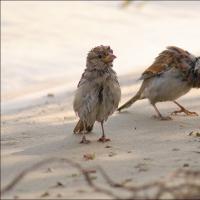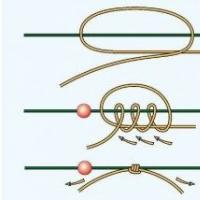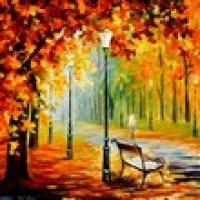Silent in the thorns, or Where did the Moscow sparrows go? Where did the Moscow sparrows disappear: the conclusion of ornithologists Why did the sparrows disappear?
In recent months, several readers have addressed to the editorial office of Komsomolskaya Pravda at once, worried about the same problem: where do sparrows disappear to ?! Earlier, it happened, you go out into the yard with bread, and there are whole flocks of them. And now - pigeons, crows, woodpeckers, blackbirds ... And not a single even the most seedy sparrow.
CHIRT GIVES CONFIDENCE
According to Elena Chernova, an ornithologist and employee of the Russian Bird Conservation Union, the first calls that sparrows are disappearing from the city began to arrive five years ago.
Sparrows need a lot of grass and shrubs, explains Chernov. - And here they are carefully mowed and cut. The leaves are raked out. Natural lawns are replaced with artificial turf. Here the food supply has decreased.
Some people think that sparrows move to the Moscow region. This is not true. Each district is home to as many birds as the area can feed. In fact, in the capital, sparrows are simply dying out. But, oddly enough, they are useful! Firstly, they eat all kinds of insects - and this increases the quality of green spaces. Secondly, after their hunt, there are fewer mosquitoes (in particular, on the capital's beaches).
And, thirdly, science has proven that the chirping of birds gives a person confidence, - adds the ornithologist, - because people have lived side by side with them since ancient times. If there are no birds outside the window, psychologically, city dwellers become anxious.
According to Elena Chernova, in some districts of Moscow there are no sparrows left at all. Many appeals are received from Babushkinsky district, Altufiev, Kuntsev. Also, there are fewer titmouses, finches, nightingales. At the same time, the capital is full of pigeons and mallards. More than 10 thousand ducks have wintered this year (according to the Moscow Department of Nature Management and Environmental Protection).
FEED NOT IN WINTER, BUT IN SUMMER
According to ornithologists, most likely, the effect is the lack of feeding. And not in winter, but in summer! On cold days, Moscow residents drag whole loaves of bread to parks and squares (this is partly why ducks almost stopped flying from the capital to the south), but on warm days they think that the birds will get their own food.
The sparrow population may also decrease due to massive diseases. Over the years, fluctuations in numbers occur in each bird species. So the number of sparrows in Moscow can recover.
WHAT TO DO?
Vadim MISHIN, head of the Ornitarium project in the Sokolniki park:
In the city for birds, it is necessary to come up with special places of survival, where they would have feeding. Such small reserves with favorable conditions for birds to feed and reproduce. Forbs, weeds where seeds can be found, and no artificial turf.
ALL FOR THE COMPETITION
In search of a bird bush
The budgetary institution "Mospriroda" recently celebrated a holiday - World Day of the Sparrow. This wonderful date falls on March 20th. In this regard, the employees of Mospriroda organized an ecological photo quest.
The sparrow is one of the birds most adapted to life next to humans, - the organizers explained to KP. - For the winter, sparrows huddle in flocks and inhabit special wintering bushes. In a typical wintering bush, several dozen sparrows sit, sometimes over a hundred. And we propose to take a photo of such bushes in Moscow before March 31 - in the yard, in a park or anywhere else. The information collected as a result of the photo quest will serve as additional materials in the work on the study of the biological diversity of the capital.
Photographers need to provide the GPS coordinates of where the photo was taken. To do this, you need to go to Yandex. Maps, left-click on the desired place - and you will receive geographical coordinates (latitude and longitude), as well as a specific address.
If someone wants to participate in the quest, send your photos by email [email protected], indicating the participant's full name and contact phone number. Everyone who does this will receive souvenirs from Mospriroda.
MEANWHILE
Rooks flew to Moscow
Heat messengers noticed by residents of Lefortovo
In Moscow during the day the temperature is already above zero. It gets dark after 19.00. There are almost no two-meter snowdrifts in the courtyards. So spring is somewhere nearby. Moreover, rooks are returning to the capital. The first birds landed in the south-east of Moscow in the Lefortovo region. Several users of social networks reported this at once.
Bird feeders have been hanging on my balcony for years. Usually the tits and sparrows arriving for lunch ate at least ten kilograms of sunflower seeds per year. But lately, the number of feathered guests has become less and less. And over the past winter, a single kilogram bag of a sunflower remained until the end not eaten.
Sometimes only one or two tits flew to the feeder, and the sparrows were not visible at all. What does this mean?
It turns out that bird watchers all over the world are sounding the alarm: the number of house sparrows is sharply decreasing in the world. And these birds are disappearing everywhere - in Europe, America, India, in the Middle East. A couple of years ago, in this regard, they even established "World House Sparrow Day", which is celebrated on March 20.
As you know, bird watchers and ecologists consider the sparrow to be an indicator of the quality of the environment. If changes occur in nature, he immediately reacts. And obviously, the researchers say, these birds were negatively affected by the deterioration of the urban environment, severe pollution of the soil and street pavements - after all, sparrows spend most of their lives jumping on the ground. It also contributed to the eradication of these birds from the cities and intensive compaction building, the demolition of old buildings, especially wooden ones, where birds usually nest. The fact is that a sparrow cannot live in houses made of concrete and glass.
Bird watchers share another disturbing observation. The decline in passerine flocks coincided with a massive increase in mobile communications and global computer networks. And there is a high degree of probability that this also influenced the health of birds and their genetics.
Success in gardening is also harmful to passerine populations in cities. The once semi-wild parks are disappearing, giving way to cultivated squares, in which there is a constant fight against pests - and they are the main food for birds. The emergence of newfangled foreign varieties of plants, which are "too tough" for local insects, is also making itself felt. Various flies and grasshoppers move away from the city, and sparrows fly away with them.
Our reference
Those birds that we are used to seeing outside the windows of our houses and in public gardens, most likely, belong to the species of house sparrows that live mainly in cities. Even in our country, the field sparrow is found - an inhabitant of the countryside.
In size, the field is slightly larger than its counterpart, its length reaches 14 cm. Their color is almost the same - a combination of white, gray, black and brown. And there is a very slight difference: the field sparrow has black spots on the cheeks with a bracket and a red-brown cap, and the brownish-gray cap of the brownie.
This is a very smart and quick-witted bird. The sparrow is brave and at the same time circumspect. He is characterized by extreme "talkativeness". Perhaps, in our region there is no other bird that makes noise like a sparrow. Often he screams and quarrels. True, quarrels among sparrows more often occur in the spring, when flocks are divided into pairs and the search for the best places for nesting begins.
The sparrow is a sedentary bird, it keeps in the same place all year round, flying out during the day in search of food and returning to the yard where it lives at night. Sparrows nest in early spring, when the trees have not yet begun to turn green. The house sparrow nest is usually placed under the loose upholstery of the wall of the house, in the hollows of trees, in empty swallow nests, birdhouses and other secluded places. A sparrow's nest is a heap of various rubbish trained from everywhere: dry blades of grass, rags, straws, feathers.
The female lays 5 - 6 eggs of various colors - reddish-white with brown and gray spots. Their parents hatch out alternately. Young sparrows hatch after a couple of weeks. They are fed almost exclusively by insects.
In places where a lot of sparrows live, their youth from different nests get lost in common flocks and chirps under the supervision of a nanny - usually an old experienced sparrow who looks around carefully and warns the baby about the danger.
We, people, these birds not only delight us with their cheerful chirping. They save trees and shrubs, from early spring starting there to hunt for harmful insects, caterpillars, butterflies, flies.
Reduction of wintering bushes is one of the reasons for the disappearance of sparrows
Shearing and uprooting "wintering bushes", in my opinion, is one of the reasons for the disappearance of sparrows. I conducted observations with young people in January "When the birds wake up", young people in Konkovo, I in Medvedkovo (since then I have been sick with the same disease without young people). There were 2 choruses on Grekov street (addresses of houses in Gr.). "Bush winters", sparrows flew on them from under the balconies and other cracks (boxes with dried flowers, etc.) when it was full light. Choral chirps and scattered in small groups. Sometimes in the middle of the day the bushes "came to life", but as soon as it begins to get dark on a cloudy day, they did not last long on the same bush and flew to private apartments. Both bushes disappeared, the sparrows scattered. A reliable "bush" was and remained at the house closest to the store, these are long-planted steppe cherries, they are not high, but dense crowns, next to a trash can and grannies + mums-dads with a child pour food here. In 2013, 14, 15 a couple with 5-7 chicks flew into the tree outside my window. There were 2 and 3 broods per warm season. During the winter, the number of mountains. sparrows at the permanent 2 feeders noticeably decreased. In 2016, the peak of the number in August-September (flock up to 8-10) is outside the window, but they are clearly squeezed out by the great tits. Dec-Jan. two sparrows arrive.
Ornithologist Natalia Kalyakina
Passerines disappear due to monoculture carpet lawns, May mowing
Demolition of old buildings
Reduction of normal lawns.
In winter, scattered salt has a negative effect
The last count in my quarters I carried out in the spring of 14, and then I noted that about 1.5-2 times less house sparrow, and the field sparrow has increased the number and is already leaving green zones for development (this is near Lefortovo Park, Soldatskaya Street, and along the Yauza to the Andronievsky monastery.
I tend to associate this with monocultural carpet lawns, mowing in May (on flowering lawns, sparrows collect insects to feed their chicks, and after mowing there is nothing to collect), demolition of old buildings and reduction of normal lawns.
In winter, scattered salt can be detrimental. In the Prioksko-Terrasny reserve, I watched a picture of siskins flying onto the road in Donki and began to peck at salt, some of them lost their mobility and were crushed by passing cars. We brought one female, ran up to drink for a day, and the next day we released it completely healthy. Sparrows can have the same story - chronic diseases and direct death from ingesting salt.
Undoubtedly, since there are fewer bushes near metro stations, where sparrows gathered and chirped loudly, the remaining ones became less noticeable, dispersed. And the field does not suit such games, I have not seen at least.
Ornithologist Y. Buivolov
Ice rains are the main reason for the disappearance of passerines.
About ten years ago, we met with an English bird, who was concerned about the disappearance of house sparrows in his homeland. We didn't take it to heart then. But it looks like it has come down to us. The fact that after the first catastrophic ice rain house sparrows almost disappeared in my zone of constant control (Lechebnaya and Fortunatovskaya streets) is a fact. Then they slowly recovered.
Bird watcher Vadim Avdanin
Since you are reading this, it means you have already wondered where the sparrows disappear so rapidly from Moscow streets in 2018 and why these birds are less and less often found in parks or seen from the window of your house.
It should be noted that these chordates can be found almost everywhere. Until recently, there were a lot of them in the center of the city, on its outskirts, in settlements and villages.
Rumors about the disappearance of the sparrows began to appear in February this year.
In fact, Muscovites were not mistaken in their guesses: ornithologists (for those who are not in the know, ornithology is a section of vertebrate zoology that studies birds) and, it is true, reported that sparrows in Moscow became several times less.
Why do sparrows disappear and leave cities
First, let's figure out for what reason this happens. Undoubtedly, we all know how badly excessive air pollution affects the environment and all living things. More and more skyscrapers are being built in cities, the appearance of the city is changing, the ecology is deteriorating, and nature, unfortunately, is slowly but destroyed.

Naturally, birds, including sparrows, do not like such buildings. They quickly move to places where they feel more comfortable and safer - to forests, villages, villages, fields, etc.
And really, do not build them nests on the roofs of modern high-rise buildings, among concrete and glass?
How can we help our smaller brothers
According to other versions of bird watchers, house sparrows are still in the cities, but they are hiding. It would seem simple to plant the parks and squares of the capital as much as possible, but for some reason this does not happen.
How can we help the sparrows on our own to stay in the city? It's simple, you need, at least, to make it easier for them to find food, for this you need to make feeders.

What to make a sparrow feeder from? No matter how trite it may sound, you can make it from anything - a milk bag, cardboard, wood, plastic bottles will do.
What's inside? You can put non-fried seeds, processed or hard cheese, oatmeal (of course, raw) into the feeder.
And you can also make a house for sparrows, in other words, a kind of birdhouse.
Finally
And finally, another interesting reason why sparrows disappear:
Recently, as many may have already noticed, communal services are trying to fill up all sorts of cracks in houses and roofs, pour concrete into cracks in the asphalt, reconstruct attics and basements.
It is not surprising that birds tend to fly away from cities.
In this case, birdhouses will come to the rescue, only the problem is that almost no one hangs them, so if you have nothing to do on the weekend, take a little time and effort, you can make and hang a birdhouse.
Let's not forget that it is we who must help our smaller brothers!
The results of the "people's census" of birds are being summed up in the capital
While the snow melts on the capital's lawns and parks, in the mornings, bird trills are heard more and more. April is the month of arrival of birds: even now you can see fieldbirds on the branches in the yards. Starlings are expected soon, and a rook can be seen in New Moscow. At the same time, the primordial Moscow bird, the sparrow, is the subject of special attention and census of ornithologists this year: in recent years, the number of sparrows, according to observations, has significantly decreased.
In the Muzeon park there is a decorative hawthorn, with huge, like cherry, bright fruits. Finally, in April, a “consumer” was found for these berries: the fieldbirds, which arrived a little earlier than the snow melted, graze on the hawthorn literally in flocks. The snow is strewn with husks and bones. Close here is a bush, squeaking from the inside: a flock of sparrows nests in it. Now they are a rare sight for the center of Moscow. Even in the troughs on the windows of houses, where sparrows used to be the majority, titmouses now reign. Where are the sparrows? Are they really dying out, as the old people in the park say?
Do you remember how it was in China in the sixties? - Natalya Khvostova, a resident of Marshal Vasilevsky Street, laments. - The party set a task, the sparrows were exterminated, then they realized it. Here we have the same - the sparrows were poisoned, probably. Because such a tenacious bird can withstand everything!
Indeed, sparrows are one of the few birds that have fully learned to survive in Moscow even with the current gas pollution. Arrogant, well-fed gray-brown birds are a sign of any fast food: where it is customary to eat while sitting in the car, flocks of sparrows attack the mirrors - give, they say, a roll, otherwise I'll mark a bite or a hood! This was the case until last year, but now the person's cheerful friends are somehow not visible. Tits are also funny, but there were always fewer of them, and the incredibly numerous pigeons do not improve the mood - they are too dirty and dull.
Sparrows have not disappeared anywhere, but their numbers have declined significantly, some argue that by several times, ”Nika Samotskaya, coordinator of the birdwatching program Birdwatching Moscow, told MK. - But there is no clear data on this issue, only observations, which are being received more and more. Including observations of professional ornithologists from the program "Birds of Moscow and Moscow Region".
According to Samotskaya, the main reason for the "passerine problems" is the improvement of the city. The cages (chicks that learn to fly) of the sparrows feed on insects, and due to excessive mowing of the lawns, and often shaving them baldly, replacing them with artificial "roll" lawns, the insects have almost disappeared. “Often insects are specially poisoned for some reason,” the ornithologist continues. “The children of the sparrows have nothing to eat, and, by the way, not only the sparrows, because very many, even granivorous, birds feed their chicks with insects.”
Another factor: in recent years, utilities have been striving to close up all the cracks in houses, in roofs, to fill attics and basements with concrete, Samotskaya notes. Meanwhile, many birds of the city nest in such anthropogenic "hollows". Birdhouses can save the situation, but no one hangs them up en masse ... That is why the number of birds in Moscow is constantly decreasing.
Among the birds, which, like sparrows, have a hard time in New Moscow, there are crows. More recently, these cleverest birds were a real scourge of the Moscow ecosystem - they easily coped with smaller birds (only they did not eat pigeons - they disdained), destroyed egg clutches, were inaccessible to almost any predators (cats, dogs, hawks, even hunters had little chance reduce the crow population). But again the lawns decided everything: the blacks, like the chicks of sparrows, also feed on insects that live in the grass. And with them now, as already mentioned, interruptions ...
On the twentieth of March, the Department of Nature Management of the Moscow Government conducted a "people's census" of the number of sparrows in the city. Now its results are being summed up by experts (although the national census is a national census, which does not claim to be accurate). We will report the results in one of the next issues of "MK".
 How many kilometers is the Moscow Moscow Ring Road in a circle?
How many kilometers is the Moscow Moscow Ring Road in a circle? Where did the Moscow sparrows disappear: the conclusion of ornithologists Why did the sparrows disappear?
Where did the Moscow sparrows disappear: the conclusion of ornithologists Why did the sparrows disappear? How to make money on homemade toys?
How to make money on homemade toys? Coloring polymer clay in different ways
Coloring polymer clay in different ways Self-tightening knot: types, methods of knitting
Self-tightening knot: types, methods of knitting How to find clients for a beginner interior designer Where to find orders for design
How to find clients for a beginner interior designer Where to find orders for design International children's creative competition "Colorful colors of autumn. Important organizational points
International children's creative competition "Colorful colors of autumn. Important organizational points